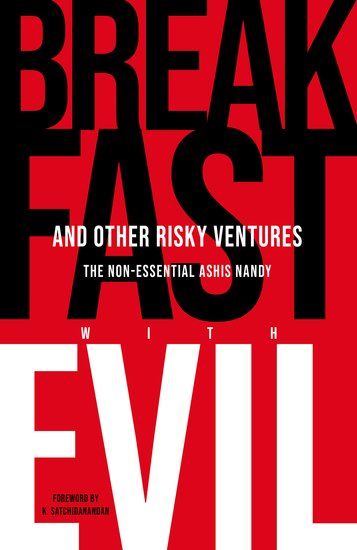Ashis Nandi takes on Satyajit Ray on his westernized Indianness and succeeds to plant doubts in the reader’s mind about Ray’s talents.
Earlier this week, Ashis Nandy sent me a copy of his latest book, Breakfast with Evil and Other Risky Ventures: The Non-Essential Ashis Nandy.
The inscription reads, “To Shri Natwar Singh, I may not be one of the lions with whom you have walked, but I hope you will like some of these essays and dialogues amusing.”
It is both affection and not so mysteriously flattering. I am older than him. He is wiser than me. Ashis is an internationally renowned political psychoanalyst, social theorist and philosopher.
“Breakfast With Evil and Other Risky Ventures”, is divided into five “Books”. Book 1 has 17 essays. Essay 15 is called “Who won the World Cup in 1994.” Book 2. Seven essays. Book 3 has five. Book 3 has nine, including one on Coca Cola. Book 4 five and book 5 has six essays—the last has a melancholy heading, “Death as a Beginning.”
The longest essay is on Satyajit Ray. He takes on Satyajit Ray on his westernized Indianness and succeeds to plant doubts in the reader’s mind about Ray’s talents. He does give him credit for Charulata. At another place he writes, “Was Ray really Indian? Or was he basically a highly westernized, deracinated cosmopolitan who dealt with Indian themes merely because he happened to live in India?” Ashis Nadi suggests that Ray knew little about village India, caste and society.
I intensely disliked Pather Panchali when I saw it the first time. When I saw it the third time my judgement tilted in favour of the film.
Ashis Nandi has made a deep study of the life, writings and philosophy of Mahatma Gandhi. In this book he has a chapter, “Gandhi after Gandhi”. He writes, “There are four Gandhis who have survived Mohandas Karamchand Gandhi’s death… The first Gandhi is the Gandhi of the Indian state and Indian nationalism. I find this Gandhi difficult to gulp and so would have, I believe, Gandhi himself. But many people find only this Gandhi tolerable and live happily with him… This is the Gandhi, we residents of the imperial city of Delhi are once in a while told, who is about to be ensconced on the pedestal vacated by King George V at India Gate. It will probably be his final coronation as the patron saint of India’s creaky First Republic.” Here Nandi has been proved wrong. The Mahatma has not been ensconced anywhere. His splendid seated statue adorns the garden opposite Parliament House.
“The second Gandhi is the Gandhi of the Gandhians… This Gandhi does, occasionally in this incarnation, convene meetings to condemn the growing criminalisation of politics, uneven development, or corruption in the country. In these seminars, everybody sheds bountiful tears about the state of affairs in India without naming any names and without mentioning any party. Everyone is happy after the event, even the corrupt politicians who have criminal connections lustily join in the applause.”
“The third Gandhi is the Gandhi of the ragamuffins, eccentrics and the unpredictable.” Ashis Nandy names some of these worthies with disdain.
“The fourth Gandhi is usually not read. He is only heard, often second-or-third hand. While a few like Martin Luther King carefully and critically assess and use his work, the rest do not even know what he wrote. Nor do they care to their attitude to Gandhi is similar to that of the late A.K. Gopalan to Karl Marx. Gopalan reportedly once said that he had not read any Marx because he would not have understood him, but he remained a Marxist nonetheless.” He was among the top communist leaders of CPI(M) and leader of his Party in the Lok Sabha during Nehru and Indira Gandhi’s time.
Ashis ends his Gandhi article thus. “I have given you four Gandhis and indicated my preferences, so that you can make your choice. But then, you do not have to choose any of the four. Perhaps that will be the wisest course. For Gandhi can be dangerous. It is much better for to hang his portrait in your office or home, like many others do, to show your respect to this edition to the Indian pantheons, and then take your children to a picnic on the public holiday that his birthday has become.”

